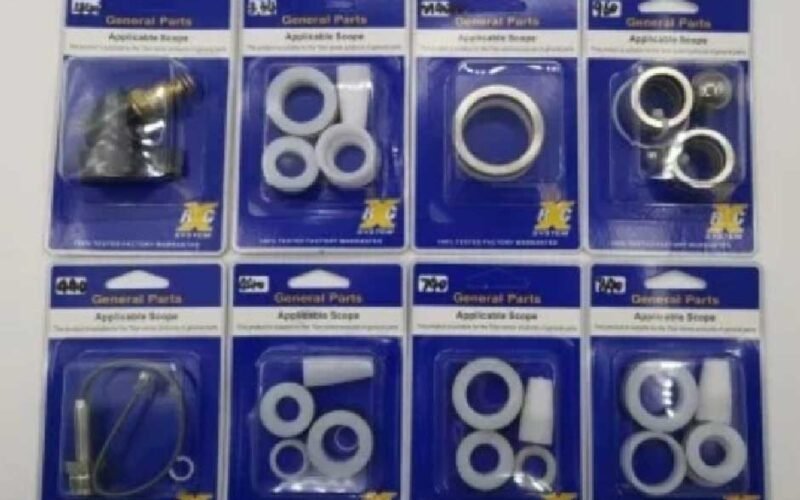With so many options available, you might feel overwhelmed if you’re in the market for a new Hydra pump. It might be challenging with all the different sorts, styles, fluids, and specifications you need to adhere to. Since the demands of various applications vary, it can be helpful to understand how the various Hydra pump design features interact to ensure that the right pump is used for the job.
Thankfully, we’ve put together a guide to help you prepare for the purchase of a Hydra pump. To find out more about the many kinds and how to select a Hydra pump, continue reading.
Hydra Pump Types
Hydra pumps utilize the principle of fluid displacement to transform mechanical energy into hydraulic energy, which is then transferred to the pump’s gears. Generally speaking, the liquid is drawn into the reservoir by atmospheric pressure created by the vacuum created at the pump inlet. The liquid is then forced through to the output and the remainder of the hydraulic system by the mechanical action of the pump, which varies depending on the design. The pump produces flow rather than pressure. The Hydra pump kit is a complete package.
- Pumps can produce this energy by non-positive displacement or positive displacement techniques, which alters the flow rate.
- A predetermined volume of fluid is trapped and displaced in a positive-displacement pump. There is no rise in pressure and the liquid’s volume remains unchanged. Positive displacement pumps, often known as hydrostatic pumps, are used in low-pressure settings.
- A non-positive displacement pump modifies the fluid’s velocity as required to produce a steady flow. As a result, while the pressure may change with each cycle, it always exceeds the maximum pressure of a positive displacement pump. A few types of pumps that use this concept are propeller and centrifugal pumps.
The majority of positive displacement Hydra pumps include the following features.
Gear Pumps
There are two kinds of gear pumps: internal and exterior. Either way, two gears work in tandem to move fluid between the teeth. Typically, these gears have helical, herringbone, or straight spur designs. One gear is powered by the drive shaft, and the other gear moves and idles by connecting with the other. When the teeth separate, a vacuum is created that draws fluid from the intake because the chambers between the teeth are sealed.
A gear pump that operates at its maximum speed typically has very high-efficiency values. Regarding gear pumps, there are numerous design varieties of Titan packing kits.
Internal gear pump
Also known as a gerotor pump, an internal gear pump consists of two gears, one smaller than the other and typically having one or two fewer teeth. For a portion of the revolution, the teeth of the inner gear point outward, while the teeth of the outer gear point inward. Within the gears, a liquid flow traverses internal space. They are not capable of handling high pressure, yet they do not produce much pulsation.
- Fluid travels around the exterior of two interlocked gears in an external gear pump. Liquid flows between the gears and the pump housing, creating a vacuum that draws liquid in from the inlet port. Higher speeds and comparatively silent operation are features of these pumps.
Axial-flow gear pump
Also referred to as a screw pump, an axial-flow gear pump produces an axial flow using one, two, or three screws. Intermeshing threads are used by the rotors of two- and three-screw pumps to transport the liquid. It is moved between the rotor and the pump housing by a single-screw pump. Because there is no pulsation or metal-to-metal contact, this design allows for extremely silent operation.
Pumps Vane
Small vanes in a vane pump move in and out of a central rotor, which is typically eccentricity-adjusted, to form chambers that allow liquid to be transferred via an oval or crescent-shaped opening. When the vanes press against the housing wall and stretch with the space’s natural curvature, they extend outward past the edge of the center rotor and form the chambers. When the space closes, the liquid is pushed through the outlet. In comparison to certain other pump models, a vane pump’s design is more sophisticated, yet it can follow a constant or variable displacement.
Pumps with Pistons
A piston pump is usually available in axial and radial variants, with fixed or variable displacement, and generates flow using rotary power.
Inline axial pumps
These pumps have an angled swashplate on one side and intake and outlet ports on the other. The pistons are arranged in a circular within the cylinder block. The pistons move in and out of the chamber as a result of the block rotating and meeting the swashplate’s angle. This operation generates a vacuum to draw liquid in and takes place close to the inlet valve. The pistons are driven back in by the outlet valve, expelling the liquid. The swashplate’s angle and, consequently, the piston stroke’s size and the space it creates can be altered according to the variable displacement concept.
Conclusion
The swashplate’s angle and, consequently, the piston stroke’s size and the space it creates can be altered according to the variable displacement concept.







